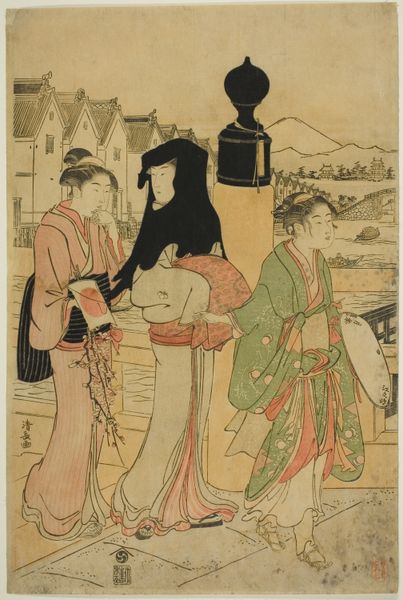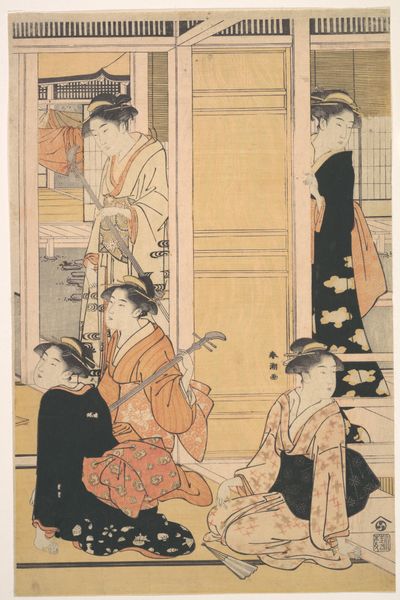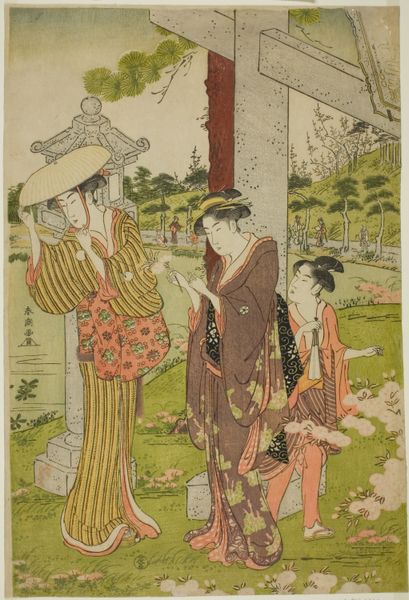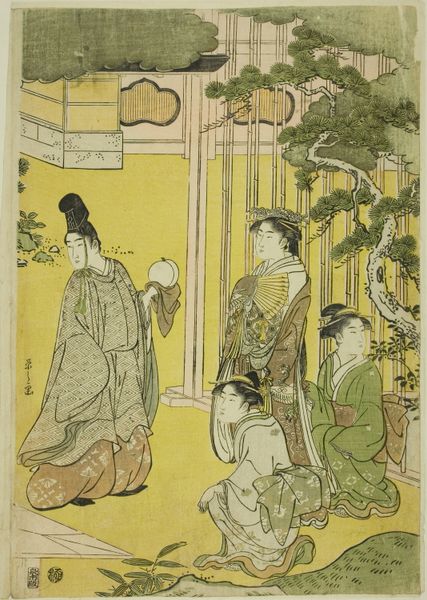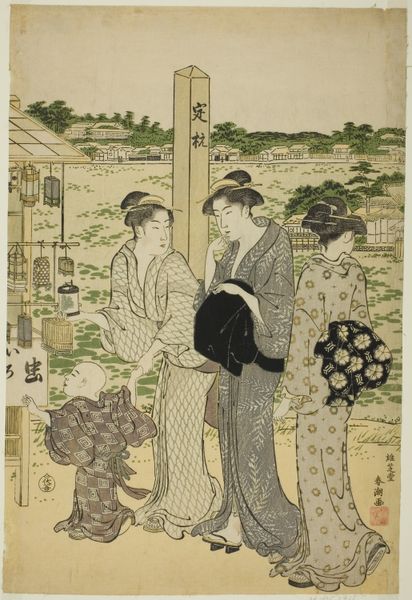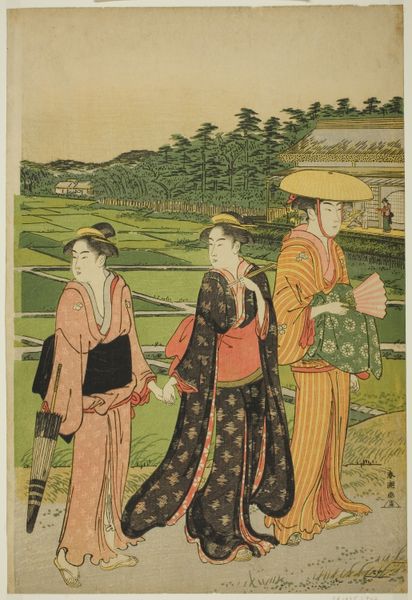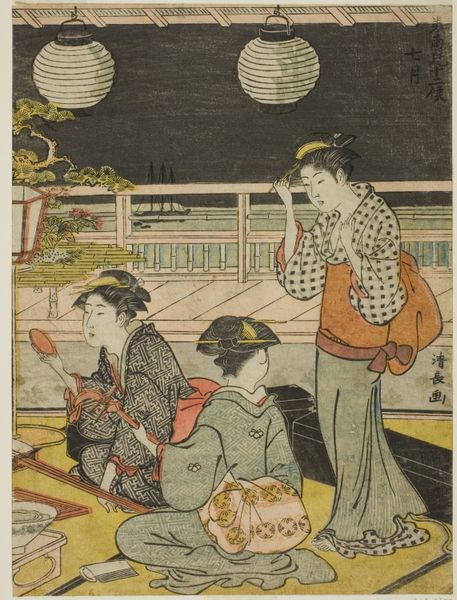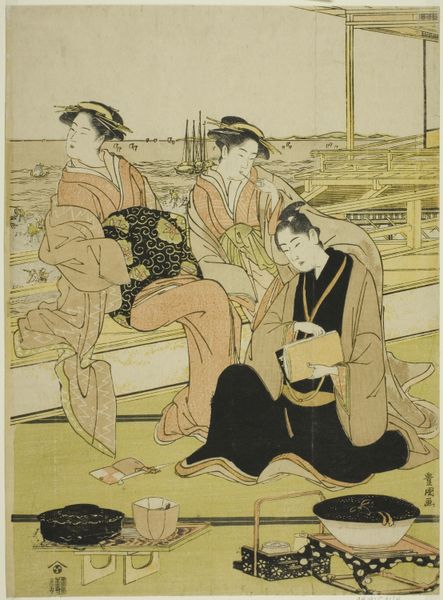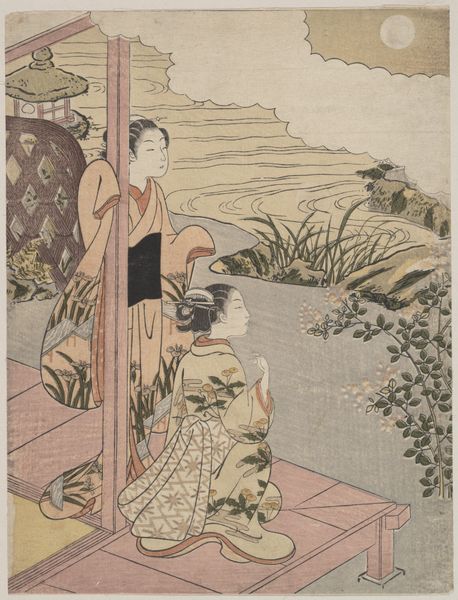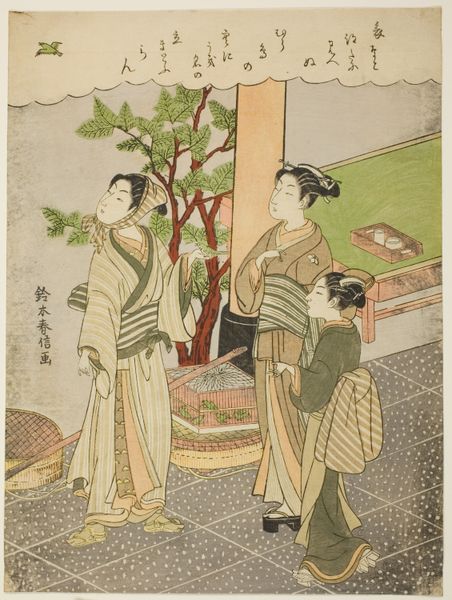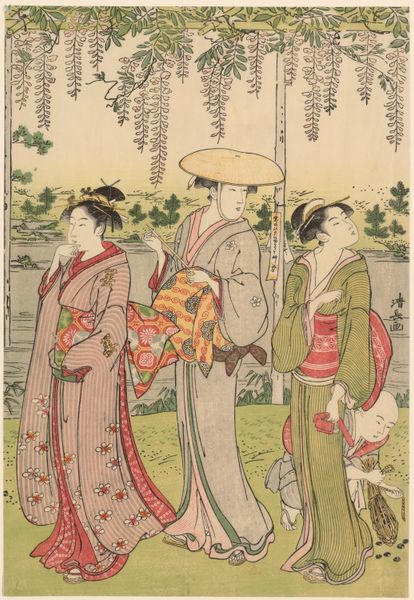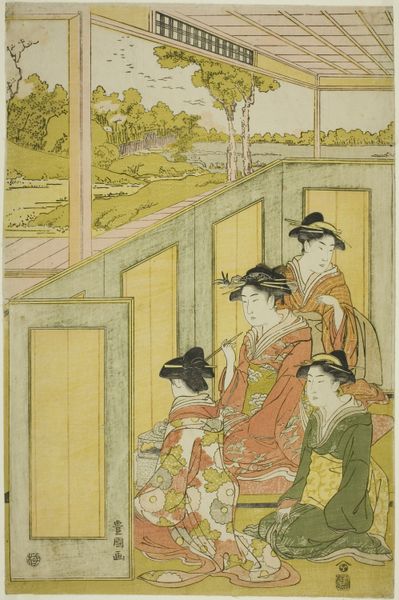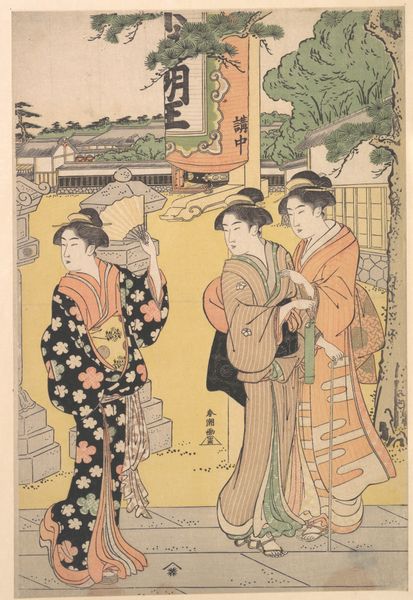
print, ink, woodblock-print
# print
#
landscape
#
ukiyo-e
#
ink
#
woodblock-print
#
genre-painting
Dimensions: 14 11/16 × 10 1/4 in. (37.3 × 26 cm) (image, vertical ōban)
Copyright: Public Domain
Curator: What a tranquil scene. I’m immediately drawn to the soft color palette and the elegant, elongated figures. Editor: Indeed. Let’s delve into this ukiyo-e print a little further. What we are looking at is entitled “Picnic in a daimyo’s garden," created around 1786 by Torii Kiyonaga, an influential artist of his time. This woodblock print, now housed at the Minneapolis Institute of Art, gives us a peek into the leisure activities enjoyed by women connected to powerful lords of the late 18th century. Curator: Ukiyo-e prints, of course, flourished during the Edo period. Kiyonaga moved away from the actor portraits of earlier printmakers, and developed prints of bijinga, or beautiful women, reflecting current fashion. It’s significant that the figures are engaged in such an intimate moment in what is ostensibly a private space; we glimpse life within the inner quarters, hinting at a certain social fluidity, albeit among a specific class. Editor: Exactly. Look at the strong horizontality established by the architecture in the background; how it balances the verticality of the figures in the foreground. Kiyonaga uses line to flatten space and create a stylized rhythm, almost like a stage set. Also, note how the details of the women's kimono—the subtle patterns—reveal social status and offer depth to each individual depicted here. Curator: And the details in what is being carried: sake and musical instrument. Beyond just surface aesthetic beauty, we can see clear visual markers signifying the development of new entertainment spheres and practices available for this social class. The image is evidence of that changing dynamic between public performance and private pleasures that marked much of the late 18th century in Japan. Editor: It's almost photographic in its composition and candid capture, yet remains carefully posed and balanced formally through the masterful interplay of shape, line, and color. Even in their simplicity, there's complexity to behold. Curator: A simple scene on the surface that opens many historical perspectives, allowing us to understand this specific culture, location, and time in Japan. Editor: A delicate slice of life, skillfully rendered as art, that continues to invite closer looking centuries later.
Comments
No comments
Be the first to comment and join the conversation on the ultimate creative platform.
